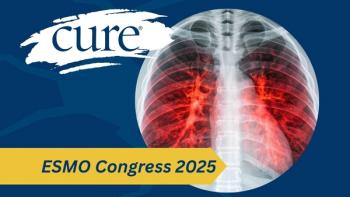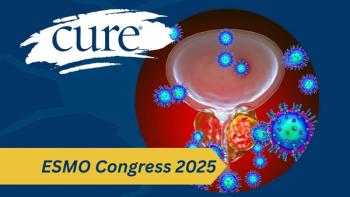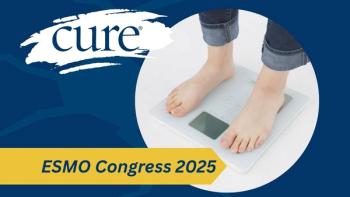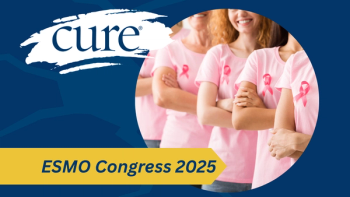
Pausing Endocrine Therapy for Pregnancy May Not Impact Breast Cancer Recurrence Risk
Women with hormone receptor-positive breast cancer who temporarily interrupted endocrine therapy for pregnancy had a similar recurrence rate to those from a control group, but one expert said that stopping therapy for a short time is still an important decision.
Temporarily stopping endocrine therapy to attempt pregnancy did not increase the short-term recurrence risk in women with hormone receptor-positive early breast cancer, according to findings from a recent clinical trial.
“The
Partridge added that this study, which was published in The New England Journal of Medicine, addressed an important question that young patients, especially those who have not completed their families, often face.
“They want to take the best breast cancer treatment, which often entails five to 10 years of adjuvant endocrine therapy,” she said. “Obviously, that's only relevant for women who have hormone receptor-positive breast cancer, and the majority of young women have hormone receptor-positive breast cancer. And at the same time, many of them are at the time when they want to have children or continue to have children — and not all, but many.”
Stopping Endocrine Therapy for Pregnancy
Partridge explained that women with hormone receptor-positive breast cancer should stop endocrine therapy to become pregnant because it can either cause birth defects and/or make it difficult, if not impossible, to become pregnant.
“If you're on Lupron (leuprolide acetate) and it's working to suppress your ovaries, then you shouldn't be able to get pregnant, and it can also cause birth defects,” she said. “Tamoxifen, we know causes birth defects. And we don't let people get pregnant on an aromatase inhibitor, but it presumably may also cause birth defects.”
In this trial, researchers analyzed data from 516 women aged 42 years or younger (median age, 37 years) with previous breast cancer whose adjuvant endocrine therapy was temporarily interrupted to attempt pregnancy. In particular, the women had stage 1, 2 or 3 disease and received adjuvant endocrine therapy for 18 to 30 months.
The primary goal of the trial was to assess the number of breast cancer events, which were defined as local (located in the tissue where cancer first began), regional (cancer that grows beyond the primary tumor to nearby lymph nodes or tissues/organs) or distant recurrence (cancer that returns in another part of the body away from the primary tumor’s location) of invasive breast cancer or new contralateral (opposite side of the body) invasive breast cancer. Recurrence events were compared with an external group of women who would have been eligible for this trial but didn’t take a break from endocrine therapy for pregnancy.
“We knew (temporarily interrupting endocrine therapy) was safe, from retrospective studies, in terms of women didn't do any worse,” Partridge said. “If (women) had endocrine-positive disease or endocrine-negative disease — if you had a baby or at least had a pregnancy or a baby— we didn't see more disease recurrences at least in recent retrospective data. But what we didn't know was whether you would do as well with an interruption of endocrine therapy, getting back on, as you would have done never having an interruption and never having a baby.”
Researchers determined a safety threshold of 46 breast cancer events during follow-up. This safety threshold would help researchers evaluate whether the number of events that occurred during follow-up was to be expected (did not exceed the threshold) or a cause for concern (exceeding the threshold).
Women had a median time from breast cancer diagnosis to enrollment in the trial of 29 months, and most of the patients — 93.4% — had stage 1 or 2 disease.
Researchers followed 497
At a median follow-up of 41 months, breast cancer events occurred in 44 patients, which did not exceed the safety threshold. The percentage of breast cancer events over a three-year period was similar in women in this trial compared with the control group (8.9% versus 9.2%, respectively).
“There were fewer events than we would have declared unsafe, so that was great,” Partridge said. “And then on top of that, when we compare them to the calculated control group cohort, they did just as well — if not better — in terms of risk of recurrence, both distant and local. So it's really good news.”
One of the caveats of this trial, Partridge said, was the short-term follow-up, which motivated the researchers to conduct longer follow-up in this group of women.
“It's pretty short follow-up, three years from enrollment, on average, and about five years from diagnosis,” she explained. “And we know that hormone receptor breast cancer, unfortunately, can come back 10 and 20-plus years later, and so we are going to follow these women out at least 10 years.”
Advice for Women
Although results from this trial demonstrated that a temporary interruption of endocrine therapy in women with hormone receptor-positive breast cancer did not worsen recurrence risks, the recurrences themselves are still an area of concern.
“There were still recurrences, and half of those recurrences were distant, which is a situation where life may be at risk, ultimately,” Partridge said. “And so, I think we have to take that into account. And then each woman needs to decide for herself what makes the most sense in the context of both her risks and her preferences.”
For more news on cancer updates, research and education, don’t forget to





